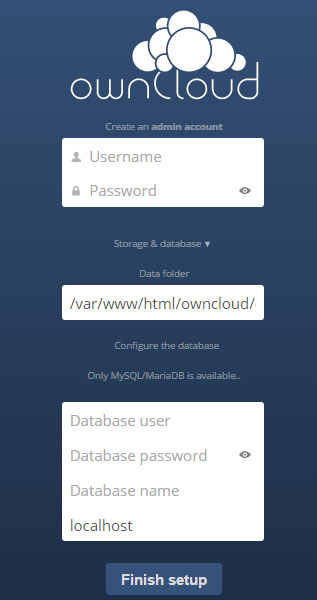How To Install OwnCloud on Ubuntu 24.04 LTS

In today’s digital age, having control over your data is paramount. OwnCloud offers a robust solution for those seeking a self-hosted cloud storage platform. This comprehensive guide will walk you through the process of installing OwnCloud on Ubuntu 24.04 LTS, ensuring you have a secure and efficient personal cloud environment. Whether you’re a small business owner, an IT professional, or a privacy-conscious individual, this tutorial will equip you with the knowledge to set up your own cloud storage system. By the end of this guide, you’ll have a fully functional OwnCloud installation, giving you the power to manage your files, share data securely, and synchronize across devices – all while maintaining complete control over your information.
Understanding OwnCloud
Before diving into the installation process, it’s crucial to understand what OwnCloud is and why it’s a popular choice for self-hosted cloud storage solutions. OwnCloud is an open-source file sync and share software that enables users to access and share files, calendars, contacts, and other data from any device, anywhere.
Key Features of OwnCloud:
- File Synchronization: Keep your files in sync across multiple devices.
- File Sharing: Share files and folders with other users or via public links.
- Versioning: Track and restore previous versions of your files.
- Encryption: Secure your data with server-side encryption.
- Collaboration Tools: Work on documents simultaneously with other users.
- Mobile and Desktop Clients: Access your data from various platforms and devices.
- Extensibility: Add functionality through a wide range of apps and plugins.
By hosting OwnCloud on your own server, you gain complete control over your data, ensuring privacy and security. This makes it an ideal solution for individuals and organizations looking to move away from third-party cloud services while maintaining the convenience of cloud storage and file sharing.
Prerequisites
Before beginning the installation process, ensure you have the following prerequisites in place:
- A server running Ubuntu 24.04 LTS (Long Term Support)
- Root or sudo access to the server
- A domain name pointed to your server’s IP address (for production use)
- Basic familiarity with Linux command-line operations
- Minimum system requirements:
- 1 CPU core
- 512 MB RAM (2 GB or more recommended for better performance)
- 5 GB of free disk space (more depending on your storage needs)
- A stable internet connection
Ensuring these prerequisites are met will help streamline the installation process and prevent potential issues down the line. With everything in place, you’re ready to begin the journey of setting up your personal OwnCloud server.
Updating and Preparing Your Ubuntu System
Before installing OwnCloud, it’s crucial to ensure your Ubuntu 24.04 LTS system is up-to-date and properly prepared. This step helps prevent potential conflicts and ensures you have the latest security patches.
Update Your System:
sudo apt update
sudo apt upgrade -yAfter the update process completes, it’s a good practice to reboot your system to ensure all changes take effect:
sudo rebootOnce your system reboots, log back in and verify that the update was successful by checking your Ubuntu version:
lsb_release -aThis command should display information about your Ubuntu system, confirming that you’re running version 24.04 LTS.
With your system updated and prepared, you’re now ready to proceed with installing the necessary components for OwnCloud.
Installing the LAMP Stack
OwnCloud requires a web server, a database, and PHP to function properly. The LAMP stack (Linux, Apache, MySQL, PHP) is a popular and reliable choice for hosting OwnCloud. Let’s install each component step by step.
Installing Apache Web Server
Apache is one of the most widely used web servers. Install it using the following command:
sudo apt install apache2 -yAfter installation, start and enable Apache to run on boot:
sudo systemctl start apache2
sudo systemctl enable apache2Installing MySQL (MariaDB)
For the database, we’ll use MariaDB, an open-source fork of MySQL:
sudo apt install mariadb-server mariadb-client -ySecure your MariaDB installation by running the security script:
sudo mysql_secure_installationFollow the prompts to set a root password and remove insecure default settings.
Installing PHP and Required Modules
OwnCloud requires PHP and several PHP modules. Install them with this command:
sudo apt install php php-apcu php-bcmath php-cli php-common php-curl php-gd php-gmp php-imagick php-intl php-mbstring php-mysql php-zip php-xml -yAfter installation, restart Apache to ensure it recognizes the new PHP modules:
sudo systemctl restart apache2With the LAMP stack now installed and configured, your Ubuntu 24.04 LTS server is prepared to host OwnCloud. The next steps will involve creating a database and configuring OwnCloud itself.
Creating a Database for OwnCloud
Before installing OwnCloud, we need to create a dedicated database and user. This step ensures that OwnCloud has its own secure space to store its data.
Accessing MySQL
First, log into the MySQL shell:
sudo mysql -u root -pEnter the root password you set during the MySQL secure installation.
Creating the Database and User
Once in the MySQL shell, execute the following commands to create the database and user for OwnCloud:
CREATE DATABASE owncloud_db;
CREATE USER 'owncloud_user'@'localhost' IDENTIFIED BY 'your_strong_password';
GRANT ALL PRIVILEGES ON owncloud_db.* TO 'owncloud_user'@'localhost';
FLUSH PRIVILEGES;
EXIT;Replace ‘your_strong_password’ with a secure password of your choice. Make sure to remember this password, as you’ll need it during the OwnCloud installation process.
Verifying the Database
To ensure the database was created successfully, log back into MySQL and check the available databases:
sudo mysql -u root -p
SHOW DATABASES;
EXIT;You should see ‘owncloud_db’ listed among the databases. With the database prepared, we’re now ready to download and install OwnCloud itself.
Downloading and Installing OwnCloud
With our server environment prepared, it’s time to download and install OwnCloud. We’ll fetch the latest version directly from the official OwnCloud website.
Downloading OwnCloud
First, navigate to the web root directory and download the OwnCloud package:
cd /var/www/html
sudo wget https://download.owncloud.org/community/owncloud-complete-latest.tar.bz2Extracting the Archive
Extract the downloaded archive:
sudo tar -xjf owncloud-complete-latest.tar.bz2Setting Correct Permissions
Ensure that Apache has the necessary permissions to access the OwnCloud files:
sudo chown -R www-data:www-data /var/www/html/owncloud
sudo chmod -R 755 /var/www/html/owncloudCreating a Data Directory
Create a separate directory for OwnCloud to store user data:
sudo mkdir /var/www/html/owncloud/data
sudo chown -R www-data:www-data /var/www/html/owncloud/data
sudo chmod 750 /var/www/html/owncloud/dataWith OwnCloud now downloaded and properly set up on your server, the next step is to configure Apache to serve OwnCloud and complete the web-based installation process.
Configuring Apache for OwnCloud
To ensure Apache serves OwnCloud correctly, we need to create a virtual host configuration file. This step is crucial for proper functioning and security of your OwnCloud installation.
Creating the Virtual Host File
Create a new configuration file for OwnCloud:
sudo nano /etc/apache2/sites-available/owncloud.confAdd the following content to the file:
<VirtualHost *:80>
ServerAdmin webmaster@localhost
DocumentRoot /var/www/html/owncloud
ServerName your_domain.com
<Directory /var/www/html/owncloud/>
Options +FollowSymlinks
AllowOverride All
Require all granted
<IfModule mod_dav.c>
Dav off
</IfModule>
SetEnv HOME /var/www/html/owncloud
SetEnv HTTP_HOME /var/www/html/owncloud
</Directory>
ErrorLog ${APACHE_LOG_DIR}/error.log
CustomLog ${APACHE_LOG_DIR}/access.log combined
</VirtualHost>Replace ‘your_domain.com’ with your actual domain name or server IP address.
Enabling the OwnCloud Site and Necessary Modules
Enable the new virtual host and required Apache modules:
sudo a2ensite owncloud.conf
sudo a2enmod rewrite mime unique_id
sudo systemctl restart apache2Adjusting PHP Settings
OwnCloud requires specific PHP settings. Edit the PHP configuration file:
sudo nano /etc/php/8.1/apache2/php.iniFind and modify the following values:
memory_limit = 512M
upload_max_filesize = 200M
max_execution_time = 360
post_max_size = 200M
date.timezone = Your/TimezoneReplace ‘Your/Timezone’ with your actual timezone (e.g., ‘America/New_York’).
After making these changes, restart Apache once more:
sudo systemctl restart apache2With Apache now configured to serve OwnCloud, you’re ready to complete the installation through the web interface.
Completing the OwnCloud Web Installation
With all the server-side preparations complete, it’s time to finalize the OwnCloud installation through its web interface. This step will set up your admin account and configure the basic settings for your OwnCloud instance.
Accessing the OwnCloud Web Installer
Open a web browser and navigate to your server’s domain or IP address. You should see the OwnCloud setup page.

Creating the Admin Account
On the setup page:
- Create an admin username and strong password.
- Choose the data folder location (the default is usually fine).
- Select MySQL/MariaDB as the database.
- Enter the database details:
- Database user: owncloud_user
- Database password: [the password you set earlier]
- Database name: owncloud_db
- Host: localhost
Finalizing the Installation
Click “Finish Setup”. OwnCloud will create the necessary database tables and configurations. This process may take a few minutes.
First Login and Basic Configuration
Once the installation is complete, you’ll be redirected to the OwnCloud login page. Log in with your admin credentials. Take some time to familiarize yourself with the interface and adjust any initial settings as needed.
Congratulations! You now have a functioning OwnCloud installation on your Ubuntu 24.04 LTS server. The next steps involve securing your installation and optimizing it for production use.
Securing Your OwnCloud Installation
Security is paramount when hosting your own cloud storage solution. Let’s implement some essential security measures to protect your OwnCloud installation.
Enabling HTTPS with Let’s Encrypt
To encrypt traffic to and from your OwnCloud server, set up HTTPS using Let’s Encrypt:
sudo apt install certbot python3-certbot-apache -y
sudo certbot --apache -d your_domain.comFollow the prompts to obtain and install an SSL certificate.
Configuring OwnCloud’s Security Settings
Log into OwnCloud as admin and navigate to Settings > Administration > Security. Enable:
- Enforce HTTPS
- Two-factor authentication
- Brute-force protection
Setting Up a Firewall
Configure UFW (Uncomplicated Firewall) to restrict access:
sudo ufw allow OpenSSH
sudo ufw allow 'Apache Full'
sudo ufw enableCongratulations! You have successfully installed OwnCloud. Thanks for using this tutorial for installing the OwnCloud with LAMP on Ubuntu 24.04 LTS system. For additional help or useful information, we recommend you check the OwnCloud website.